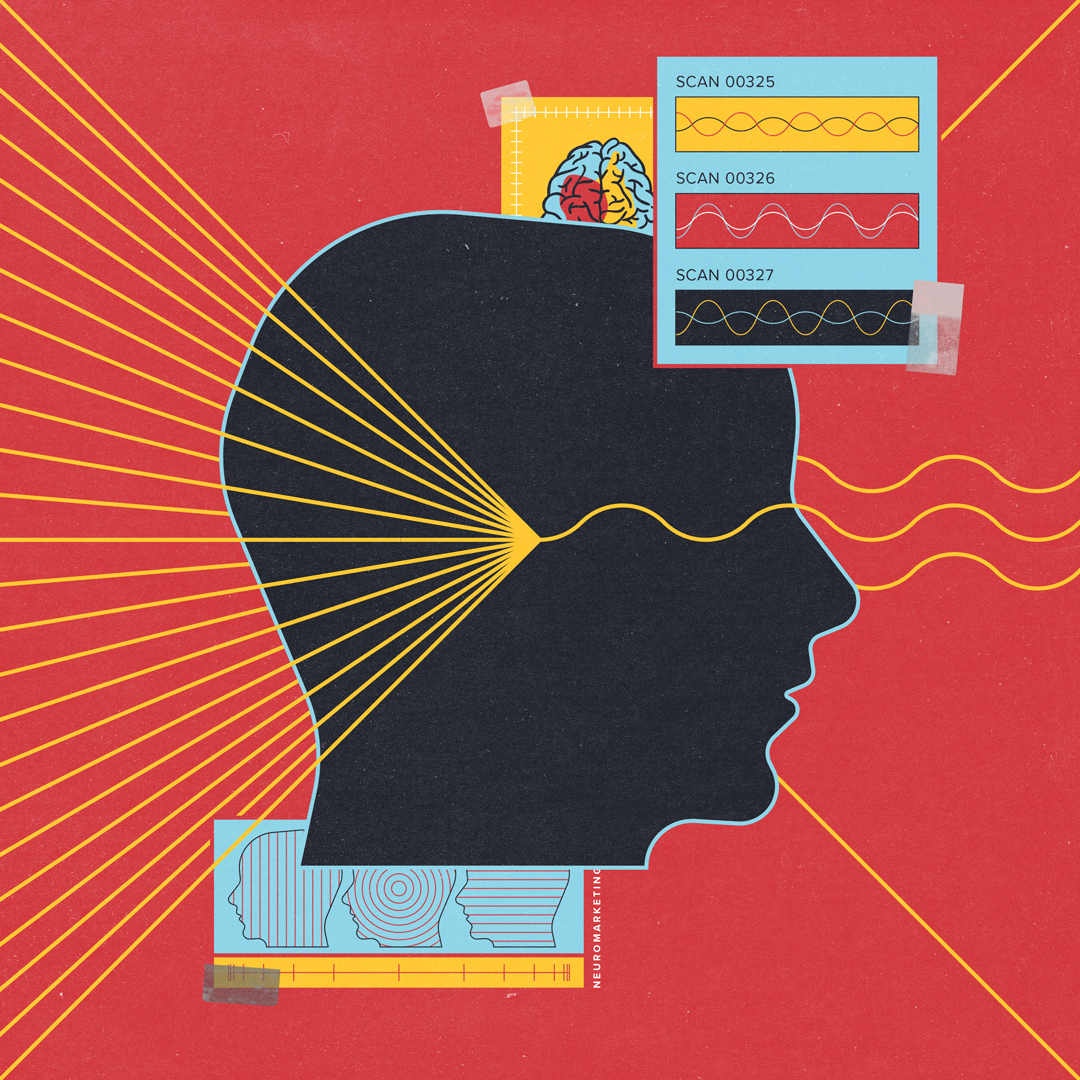Have you ever seen an ad for something you were just thinking of? An interaction so eerily well-timed that it caused you to squint suspiciously at your phone as if it were listening to your thoughts? No, our technology isn’t listening to us, at least not yet.
The truth is marketers have a new trick up their sleeve: neuroscience, also called consumer neuroscience. With such a huge amalgamation of user data readily available, marketers are now leveraging the insight into the brain’s emotional responses, in partnership with existing marketing metrics, to get an exacting read on what’s working – and wield the information to create a memorable campaign to entice audiences.
Neuromarketing is used to move a consumer to action by taking messaging to the next level – by fusing that messaging with an emotion or existing memory in order to create a new association. By measuring things like heartbeat, gaze fixation or facial expressions during creative tests, neuroscience gives marketers the ability to gain insights into impressions, reactions and emotional responses when exposed to marketing stimuli – and in turn use that data to inform branding, online experience, pricing, product development and product experiences.
Engaging the science behind what moves a target can not only deepen the understanding of what matters most, but can also help create messaging that is novel and powerful enough to influence purchasing decisions. That’s why neuromarketing is shaking up traditional ways to reach target audiences and create notable campaigns that further connections, credibility and loyalty. Here’s a look at how this practice is helping marketers and benefiting brands – and why it may be worth your time and investment.
The Memory as a Muse, Avoid Surprise and Embrace Anticipation
Neuroscience has taught us that the brain has an easier time grasping simple deviations from familiar patterns in the memory database, and that’s why new products and ideas that align with a meaningful memory or common human experience are most likely to resonate. By blending borrowed equities from the established and relatable with fresh creative, brand messaging has a higher propensity to cut through the noise and grab the brain’s attention – while making it easier to grasp the new element of the message and remember the campaign.
Marketers have certainly used surprise and delight as a way to engage their target. But biological creative testing within the realm of neuroscience has revealed that surprise is not the best way to woo and win consumers. That’s because our brains are wired to predict what’s to come. When we’re surprised, our brains are not able to engage our working memory to make lasting associations with a new concept or idea. Instead, they’re forced to go in a completely new and different direction to solve for the unknowns – and this causes us to lose the ability to connect with the campaign in front of us.
Neuroscience has also uncovered the fact that some emotions are more valuable and impactful than previously thought. Among them is anticipation. Neuromarketing can measure the brain’s response to test if anticipation is actually being invoked through the creative presented – and this makes it possible to test the novelty of creative and gather insights around whether or not it is achieving the desired impact.
Creating a Cross-Disciplined Plan
Neuroscientists can employ tactics such as an fMRI (functional magnetic resonance imaging) to measure the target’s neural response and determine how the brain perceives messages in the limbic system – the part of your brain associated with memories, emotions and the subconscious.
By backing up your ad creative with scientific data, brands can build a personalized message across touchpoints. Infusing the message across disciplines will make it more likely for audiences to establish a dopamine-driven, emotional connection to your brand – whether they’re interacting with you online or in real life.
Take for example, a simple, attainable message like “I’m Lovin’ It” from McDonald’s. Upon hearing the simple syntax of “I’m Lovin’ It,” you can almost see the golden arches in your head. It’s portable, repeatable and threads an emotion across digital, PR and traditional touchpoints to meet audiences wherever they are. With the saturation of campaigns out in the world for consumers to interact with, cross-disciplined plans that create one cohesive message can influence purchase power and clarify the reward of choosing your brand above the rest – which is why having strong researcher/marketer partnerships to refine the messaging at any touchpoint is key to getting the most out of our investment.
Should We Invest?
In-house neuroscience departments are still likely out of reach for most marketers, simply due to cost. To find a reputable neuromarketing firm, it’s best to begin the search in partnership with an agency you can depend on. Joining forces with an agency, preferably one with a marketing science discipline, can facilitate a clean handoff of information for maximized results. They may have neuroscience partners in mind that can provide data for the agency to distill from more expensive methods like fMRI brain scans, to craft memorable campaigns at a more efficient cost.
Some agencies with marketing science capabilities have already begun to invest in neuroscience to supplement more traditional techniques like focus groups and implicit association. Gaze fixation, heart rate tracking and facial coding are among the more economical methodologies, allowing teams to gather data that helps predict market-level behavior to inform and inspire brand campaigns.
By investing in studying and filtering the consumers’ emotional responses, it’s possible for marketing to become more memorable, which is always the goal. After all, if the target doesn’t remember a campaign, how will they remember to act on it?
Interested in enhancing your next creative campaign through marketing science? Email Dana at darnold@hiebing.com to set up a call.
